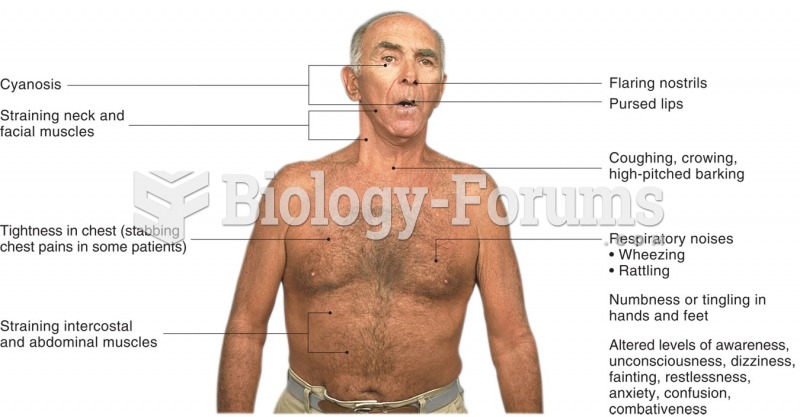Answer to Question 1
Correct Answer: 4
Rationale 1: Physiological needs include air, food, water, rest, and sleep.
Rationale 2: Safety and security needs are those things, both psychological and physiological, that help the person feel safe.
Rationale 3: Love and belonging needs include giving and receiving affection, attaining a place in a group, and maintaining the feeling of belonging.
Rationale 4: Self-esteem and esteem from others includes feelings of independence, competence, self-respect, recognition, respect, and appreciation. Self-hatred and disgust is opposite of what one would expect in the self-esteem level of Maslow's model.
Answer to Question 2
Correct Answer: 4
Rationale 1: Psychologic homeostasis is acquired or learned through the experience of living and interacting with others. Individuals can develop psychologic homeostasis if they are in a stable physical environment where they feel safe and secure. A child who is alone while getting ready for school may not feel safe and secure.
Rationale 2: Individuals also need a stable psychologic environment from infancy onward so that feelings of love and trust develop, a social environment that includes adults who are healthy role models, and a life experience that provides satisfaction. Having friends of the same age who are parents may eliminate healthy adult role models for the teenager.
Rationale 3: Individuals also need a stable psychologic environment from infancy onward so that feelings of love and trust develop, a social environment that includes adults who are healthy role models, and a life experience that provides satisfaction. Moving into a long-term care facility can be a huge adjustment for some people, which may affect feelings of safety and security.
Rationale 4: Individuals also need a stable psychologic environment from infancy onward so that feelings of love and trust develop, a social environment that includes adults who are healthy role models, and a life experience that provides satisfaction.A young adult who has a relationship that lasts is the one option that would fit most of these mechanisms.







